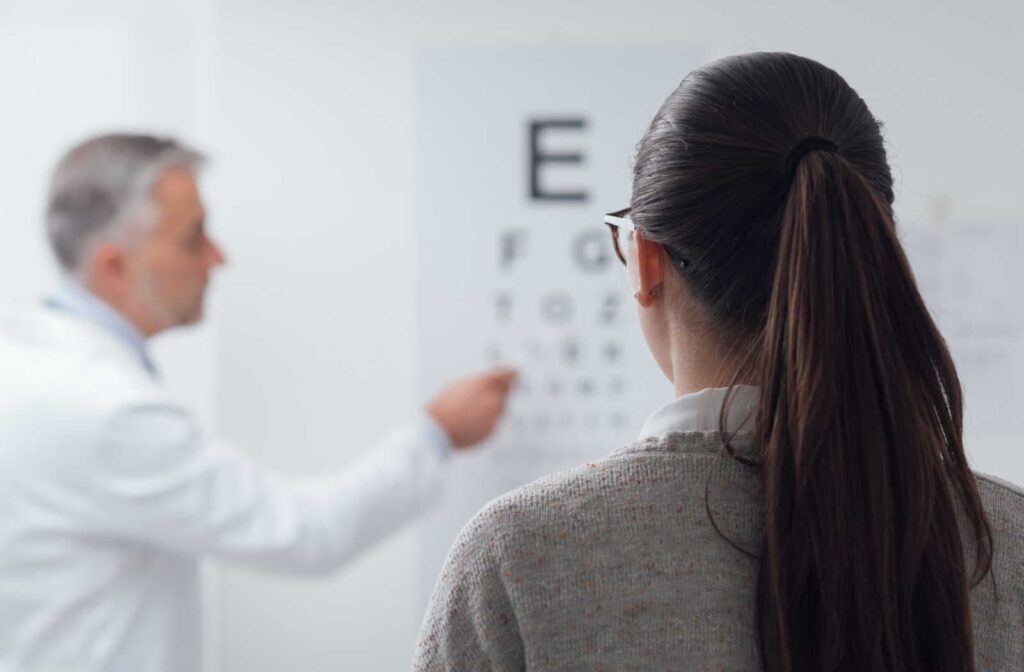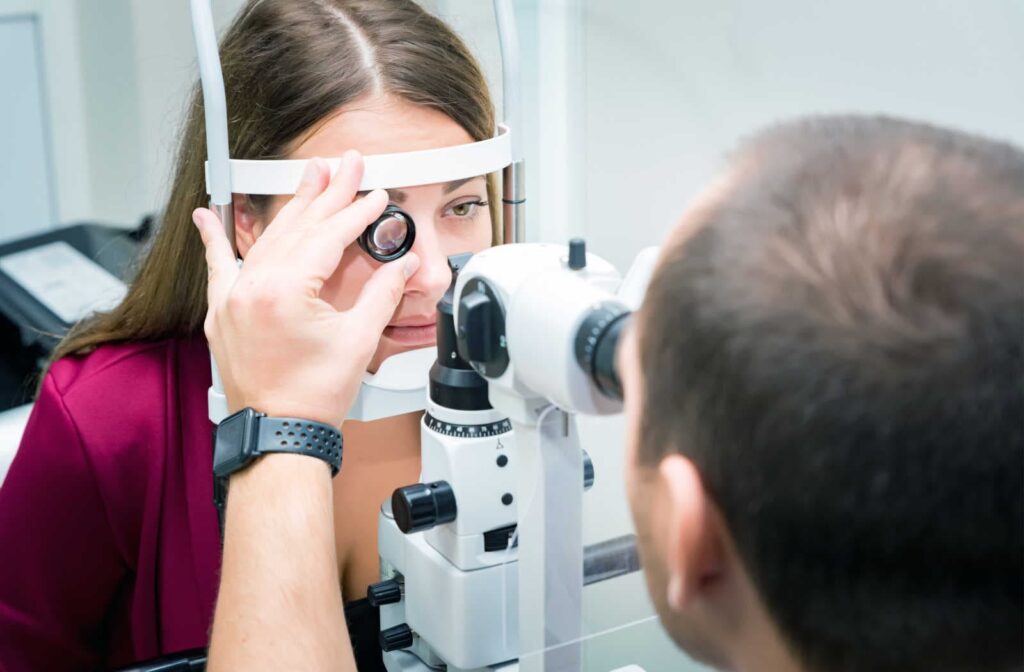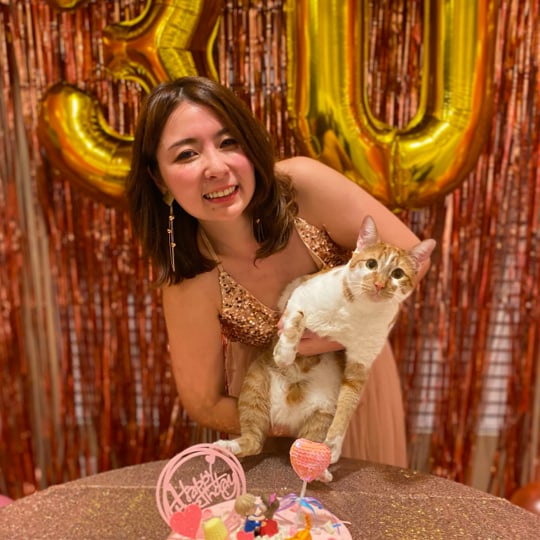How Long Is Eye Doctor Appointment?
A regular eye exam is essential to maintaining good eye and vision health. As we age, this preventative eye care helps us preserve our vision and watch for signs of developing eye diseases or conditions.
If you’re living a busy life, it can seem easy to keep pushing off these regular check-ups, thinking you don’t have time to fit one into your schedule. However, a comprehensive eye exam only takes 20–60 minutes, but the wellness and peace of mind it gives can last a lot longer.
Is it time for your next eye exam? Visit a trusted eye doctor in Scottsdale at Eye Lab by conveniently booking your appointment online today!
What Factors Can Influence the Length of an Eye Exam?
Several factors can influence the length of an eye exam. Specific tests required during the exam, such as pupil dilation, visual field tests, or retinal imaging, can add time.
The patient’s age and medical history also play a role—for instance, pediatric or senior eye exams may take longer due to additional assessments needed for these age groups. If the patient has pre-existing eye conditions or symptoms that require further investigation, this can also extend the length of an eye exam.
Preparation and completing pre-exam paperwork beforehand can help streamline the process, but overall you should plan for 20–60 minutes at the eye doctor.
How Often Should You Have An Eye Exam?
How often you should have an eye exam depends on several factors, including your age and any pre-existing eye conditions. In general, you should follow this schedule:
- Birth through 2: At least once
- 2 years and up: Annually
Certain medical conditions might require you to have more frequent eye exams. If you have the following conditions, you might be considered at-risk and should have annual check-ups no matter your age:
- A family history of eye disease
- Belonging to certain racial groups
- Highly demanding visual jobs, or jobs with a high potential for eye injuries
- You wear contact lenses
- Undergone eye surgery due to an injury or laser eye surgery
- Have a progressive refractive error
- Diabetes
- Thyroid disease
- Hypertension
- Rheumatoid arthritis
- Autoimmune disease
- Multiple sclerosis
- Long-term chloroquine
- Hydroxychloroquine

What Happens at an Eye Exam?
Depending on your unique eye care needs, a comprehensive eye exam can take up to an hour and involve a range of tests. The doctor will generally begin by reviewing your vision and medical history, which will help them figure out which tests to run.
Visual Acuity
A visual acuity test will measure how clearly each of your eyes can see. This might be one of the most recognizable tests as part of an eye exam, as it requires reading letters off a chart. By reading this chart at a set distance, your optometrist can measure your near and far vision, expressing the result as two numbers, such as 20/40.
You may have seen 20/20 vision referenced but not know what it means. Quite simply, 20/20 is normal vision and means that you can see clearly at 20 feet what most people can see at 20 feet. 20/40, on the other hand, means you have to be at 20 feet to see clearly what most people can see at 40 feet.
Preliminary Tests
You’ll likely undergo various tests to assess specific aspects of your visual functions. These can include:
- Color vision: Using color plates, an anomaloscope, or a hue test, your optometrist can tell if you have any degree of color blindness.
- Depth perception: A binocular vision test can assess depth perception, eye coordination, eye muscle control
- Peripheral vision: Using a visual field test, your optometrist will assess your side vision. While this could be a range of tests, an automated static perimetry test is a popular one. This test uses a machine that holds your head still while staring into a dome. Then, using a clicker, you’ll indicate when you can see lights flashing in your side vision.
Eye Health
Many structures in your eye work together to create an image. Your optometrist has a wide variety of tools and technology to inspect these parts of your eye, assessing their general health and wellness.
To get a better look at some of these structures, your optometrist might use dilating eye drops that will widen the pupil and allow for a better look inside. These drops can last a few hours, and many people find driving hard after a dilated eye exam. Your optometrist will warn you if they intend to dilate your eyes so that you can prepare for a ride home after the exam.
Your optometrist might perform a tonometry test to determine whether or not you’re at risk of developing glaucoma. This test measures the pressure inside your eye. People at risk of glaucoma typically get this test, such as those who are over 40 and have a family history of glaucoma.
Keratometry
Keratometry measures the curvature of the clear outer surface of your eye, known as the cornea. It uses a keratometer, which shines a light on your eye and measures its reflection. While this test can help detect imperfections on the cornea’s surface, it’s particularly important to find the proper fit for contact lenses.
Refraction Tests
Your optometrist can detect refractive errors by shining a light into your eye and seeing how it refracts. If we do find a refractive error, we’ll also determine your prescription for your glasses or contact lenses. Finding the proper prescription is done with a large mask-like piece of equipment called a phoropter.
One eye at a time, your optometrist will take you through a sequence of lenses while you read off an eye chart. We’ll repeat this procedure until we can be sure we’re getting you the clearest vision we can.
Modern Eye Care
An eye exam doesn’t have to be stressful, and it doesn’t have to be complicated. At Eye Lab, we know how to use the latest technologies to get you the best vision care without you having to worry about all the science.
If you haven’t had an eye exam recently, book an appointment today, and let us take care of the rest!





